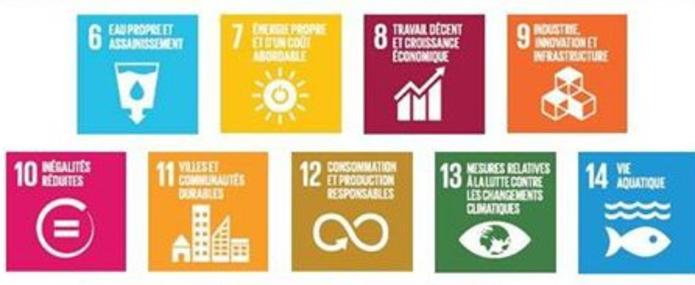Agenda 2030 is a real global policy project on sustainable development. However, the reporting exercise designed by the United Nations will not be enough to ensure its effective implementation. One key to its success lies in the capacity of the targets to generate policy decisions that are conducive to sustainable development. But how exactly? How can the potential of the SDGs be unlocked?
The “policy implementation” of these commitments at the national and local levels
through the introduction of reforms conducive to economic, social and environmental development. This requires the ability to combine three elements.
- First, the clarification of a narrative, of a long-term vision, potentially going beyond 2030, which is essential to ensure that ministers and social partners adopt the agenda: what will France or Germany be like in 2030 if the SDGs are achieved, in terms of not only social issues and inequalities, but also the energy and food sectors, among others?
- This “policy implementation” also requires the prioritisation of commitments made for 2030. This is no easy task. It is diplomatically sensitive given that some countries, including France, have insisted on the indivisible nature of the agenda. But without being called into question, this indivisibility needs to accommodate a ranking of priorities. To clarify this, it is not a matter of choosing between fewer unemployed people and less soil pollution, for example, or between fewer inequalities and better health security. The goal is to establish consultation processes with citizens in order to discuss the choice of targets that are essential to the evolution of a society in a direction that the UN cannot control. Most of the European countries have launched (or are about to launch) analyses to ascertain the state of the different SDGs in each country. This will enable them to determine their position in relation to the other countries, and especially to identify the most “sensitive” goals and targets – in other words those that are the furthest from business as usual – and consequently those that are a matter of priority.
- Finally, implementing the commitments of Agenda 2030 will require clarification of the different stages involved in this long-term vision, which are crucial to bringing the SDGs closer to specific operational decisions, without which the stakeholders will quickly tire of their overly programmatic nature. Since the SDGs are based on indicators and targets, the countries will need to undertake strategic planning of scenarios to achieve the goals: identifying the gap between future trends and the desirable future in 2030 would help to identify the public policies to be implemented as a matter of priority.
Strengthening the coherence and coordination of public action
First through the identification of structures responsible for coordinating the implementation of sustainable development action plans. Indeed, the SDGs cover a very broad field of action that extends beyond environmental issues and requires horizontal coordination between public administrations. One example in this respect is Finland; one of the country’s first decisions concerning the SDGs was to transfer their responsibility from the Environment Minister to the Head of Government. This shows just how important it is to ensure the policy debate does not restrict the SDGs to just another relatively marginal sectoral discussion, and instead puts them back at the centre of the cross-cutting vision of what each country’s society hopes to become. The alignment of existing strategies with the SDGs is another fundamental stage, without which the action and implementation plans (currently being defined by the European countries) would be just one more strategy, running counter to the need for coherence of Agenda 2030. This implies aligning not only national sustainable development strategies with the SDGs (as provided for in the text adopted in September 2015), but also strategies on education, health, etc., at the risk of overly simplifying these strategies.
As an opportunity to consolidate a blueprint for society that has guided European societies for several decades, thanks to the international reporting process the SDGs are also a tool that can be used by stakeholders in the national policy debate. Social mobilisation is a key factor in the implementation of international agreements, especially in terms of gaining the attention of policy makers, publicising the results of evaluation exercises and highlighting the radical changes needed for sustainable development. The challenge is therefore to increase knowledge of the goals and to define the individual roles of the different stakeholders (state services at the local level, NGOs, foundations, the private sector and the academic community).
Corporate responsibility remains to be defined, along with that of the social partners, since far more attention has so far been directed at mobilising stakeholders for the drafting of strategies or bills – for example the Grenelle de l’Environnement – than at monitoring their implementation. In Switzerland, civil society is planning to create an SDG Watch – a mechanism that would monitor the evolution of the SDGs – and to draft a shadow report to counterbalance the government’s report. As a legislative body that monitors government action, Parliament has a key role to play. In 2009, for example, Germany introduced a sustainability criterion into impact assessments for new laws and regulations. Strengthening the role of sustainability indicators in the legislative budget allocation process and integrating the SDGs into the LOLF (French finance laws) classification would be an important tool for the implementation of sustainable development.
In conclusion, Agenda 2030 is the opportunity to make the SDGs a tool for change. There is nevertheless still a gap between the goals of the agenda and the state of national commitments to achieve them. This is the challenge for the coming months.



